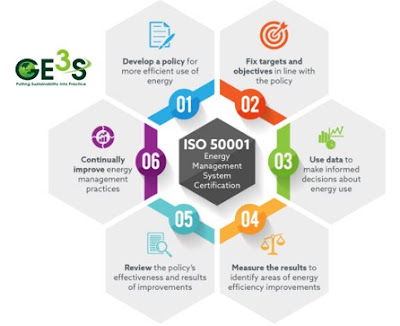Climate Declaration and role of LEED Green Associate
There are
several company’s who are declaring environmental benefits of their products
including the “Climate” benefits. But are they doing it right, is the
estimation based on scientific research and internationally accepted standards?
Not always! The LEED Green Associate and
LEED AP credentials examination covers the GHG emissions and lifecycle analysis
topics in detail. Some of the complex environmental benefit product labels that
we have come across include cold water laundry detergents, fuel-saving tires,
energy efficient shock absorbers, emissions saving data centers, green and
clean cleaning chemicals, etc. We have seen that there is an increasing trend
on company’s disclosing their environmental and social benefits of using their
products. The CDP or the Carbon Disclosure Project conducted a survey in the
year 2017 and identified that about thirty-six percent of companies sold
products that they believe would cut down on GHG emissions. However, these
claims on emission reduction are seldom verified and or accurate. Professionals
like LEED GA and LEED AP can
estimate the emissions more accurately as they have the background on
sustainability. The World Resources Institute recently conducted review of
claims made by several companies from different sectors and market segment.
They noticed that there were methodological problems with how many of these
corporations were evaluating the climate impact of their product. One of the
keys and the consistent loophole that was seen that none of the companies
researched on if or will their product can also lead to an increase in
emissions so that a net comparison could be undertaken. If they had carbon
professionals or Leed Green Associate / Leed AP in their team then
they may have been able to point at this gap.
This
misinformation is not good for end users. As the user relies on such
information and makes choices between products based on these disclosures. The
impact could be even huge if these products are being bought in volume and
someone is accounting for emissions reduction without being fully informed
about the product as the data isn’t publicly available.
The
companies who make climate claims about their products must not compare apples
with oranges. The companies need to understand that the GHG avoidance claim can
be of three types. The most common type is when you compare two single products
such as two washing machines. When making such assessments the comparison must
be with the same segment/configuration product, for e.g. comparing emissions
from a 5 tonne AC with 3.5 tonne Ac doesn’t make any sense whatsoever.
One must
also, account for emissions from the products entire lifecycle. That is from
cradle to grave or in other words from extracting raw materials, transporting,
processing, and then manufacturing of the product to again transportation, use,
and disposal. As a product may release less GHGs when manufactured but may
release more emissions throughout its lifecycle as compared to another
replaceable product that has more GHG emissions during the manufacturing
process.
GE3S
provides training on Carbon as well as LEED Green Associate Exam
preparation every quarter. Our next LEED Green Associate Exam preparation
training course is scheduled right after Eid in June 2019.




Comments
Post a Comment